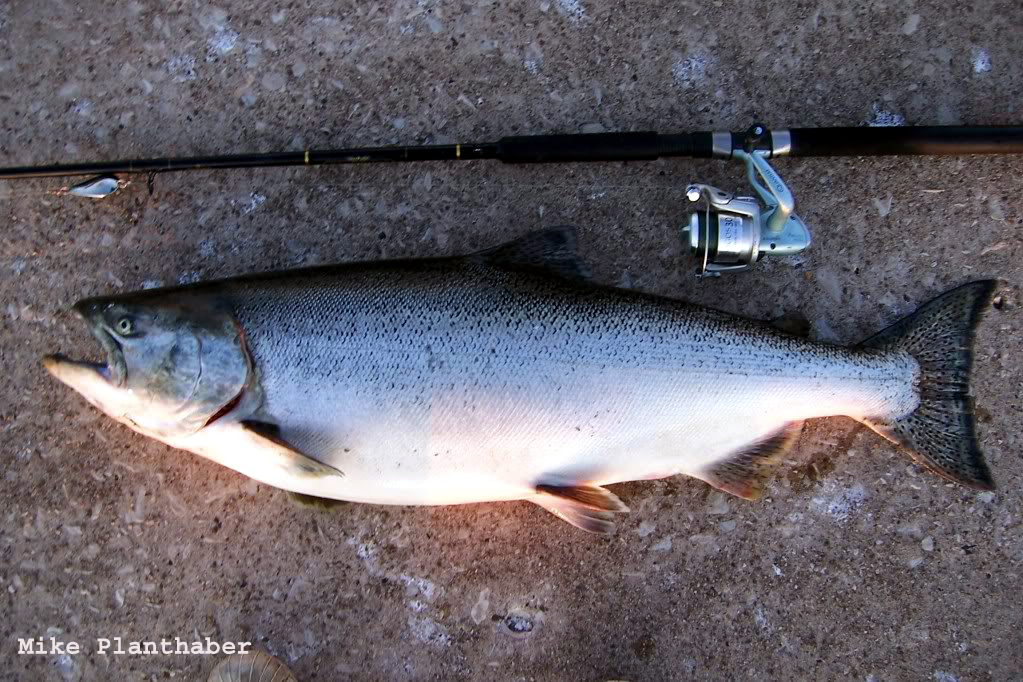Chinook Salmon
(Oncorhynchus tshawytscha)

Chinook or king salmon are the largest of the pacific salmon species. In the Great Lakes where they are introduced they rarely exceed 30 pounds. However, in their native range where they have access to the ocean they can reach over 100 pounds.
Description
Chinook salmon are a large silver fish with black spots on their back and entire tail. Like all members of the Salmonidae family they have an adipose fin. Chinook salmon have black gums and spawning fish in the Great Lakes turn a muddy brown in color. These large spawning fish are sometimes referred to as "mud sharks". Mature males develop a hooked upper jaw called a kype.
Habitat and Habits
In their natural range on the west coast of North America salmon are anadromous (spawn in freshwater and live adult lives in the Ocean). In the Great Lakes chinook salmon populations are maintained by stocking young fish. They spend most of their lives in the deep water of the lakes and then try to spawn in tributary rivers. No salmon are stocked any longer in Lake Erie. Occasional fish are caught which are strays from one of the upper Great Lakes.
Reproduction and Care of the Young
Chinook salmon travel long distances up rivers from the Pacific Ocean to spawn in their natural range. After spawning they die. In the Great Lakes introduced populations are maintained by stocking young fish.